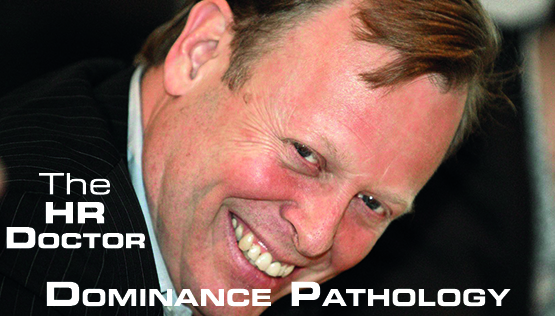 03.08.2020
03.08.2020
The HR Doctor 5:
Dominance Pathology
Af Nick Holley, Associate Director of Learning, Corporate Research Forum
|
Nick Holley er Keynote på Træfpunkt HR 2020 online, hvor han deler ud af sine diagnoser over de 10 ”sygdomme”, som han har set HR lide af i de 30 år, han har fungeret som praktiker, researcher, underviser og konsulent. Kan du genkende dem? Som optakt til Keynoten sætter vi fokus på de 10 sygdomme i ugerne op til Træfpunkt HR. |
There is a ‘wall’ in HR. A wall of process, policy, employment law. Too many HR people stand behind the wall telling people ‘you can’t do’ that because of the wall, because it’s against policy, because it might have legal risks. Good HR people stand in front of the wall. They talk about ‘potential risks and consequences that you need to be aware of in taking a commercial decision’. They see their role as managing risk not preventing risky decisions.
Symptoms
- HR becomes the guardian of the ‘corporate no’, hiding behind the ‘wall’. HR takes away all responsibility for managing people from line managers.
- HR sees HR as its job and never involves the line.
- HR ignores views that are different to its own.
- HR feels it needs to control everything to do with managing people, rather than recognising its role is to support the business and the line in identifying and addressing the key people issues.
- HR never consults with anyone with the result that it implements a load of ‘HR stuff’ that doesn’t actually make a difference to the business.
- HR simply steamrollers resistance.
Impact
- The problem is that this approach alienates everyone. People try and avoid involving HR because they know the only response they’ll get is ‘computer says no’.
- This marginalises HR with the result that line managers take risks they don’t know are risks. At best HR has to clear up the consequences after the event. At worst they can have a serious enterprise wide impact.
Example
The biggest problem I often encounter is this results in HR developing things that make HR’s life easier without thinking through whether, at best they help the line or, at worst they actually make the line’s role harder. In one instance I was asked to go to Spain to see what I was told was a best of breed performance management system. This online system required line managers to complete 132 boxes on each of their direct reports. This generated 430,000 data points with 200 built in tools to analyse this data. When I stood back from what appeared to be a really whizzy system, I began to ask some practical questions.
- How many of the tools have you actually used to analyse the data?
- What key things have you learnt from this analysis?
- What have you done differently as a result that has added value to the business?
The sad thing was that the answer was ‘nada’: nothing. What was even sadder was no one had thought to ask how long it would take a manager with 40 direct reports (as they had in their call centre) to complete the system. I heard stories of managers who had taken two days holiday to do it. I heard stories of how a group of managers in IT had actually created a bolt on programme that spoofed the system into thinking they had completed the process.
This is dominance pathology at its worst, implementing a system that made line manager’s lives a misery without actually generating any value added for the business. The only value added appeared to be for the HR team who seemed to spend an inordinate amount of time presenting their whizzy system at HR conferences to loud applause.
Cures
- Create an operating model for HR that focuses on being simple, straightforward, helpful, commercial, aligned, respected and credible.
- Spend time in the business understanding how stressful it is to manage a P&L or a large militant labour force. This means secondments or job rotation for HR people into line roles, or even going as far as recruiting line managers into HR so they can share their experience and ensure HR fulfils its role in supporting the business.
- Train HR people in risk management concepts so they understand how to avoid and mitigate risks in a rapidly changing world, rather than thinking a policy can foresee all eventualities and will be enough.
- Train and reward HR people to operate in front of rather than behind the ‘wall’, engaging with the line, challenging where appropriate, but always doing it from a business outcome focused approach. In the earlier example where an HRBP adopted a ‘value-based approach’ she said no without actually saying no. She asked the brilliant question that unearthed the issue and led to the three business leaders doing the right thing because they understood the implications.
Læs også
- The HR Doctor 1: Disconnection disorder
- The HR Doctor 2: Delivery deficiency
- The HR Doctor 3: Initiativitis
- The HR Doctor 4: Compartmentalisation
- The HR Doctor 6: Easy Way Outosis
- The HR Doctor 7: Lack of depth malady
- The HR Doctor 8: Me-me-me syndrome
- The HR Doctor 9: Action paralysis
- The HR Doctor 10: Hair shirtysm